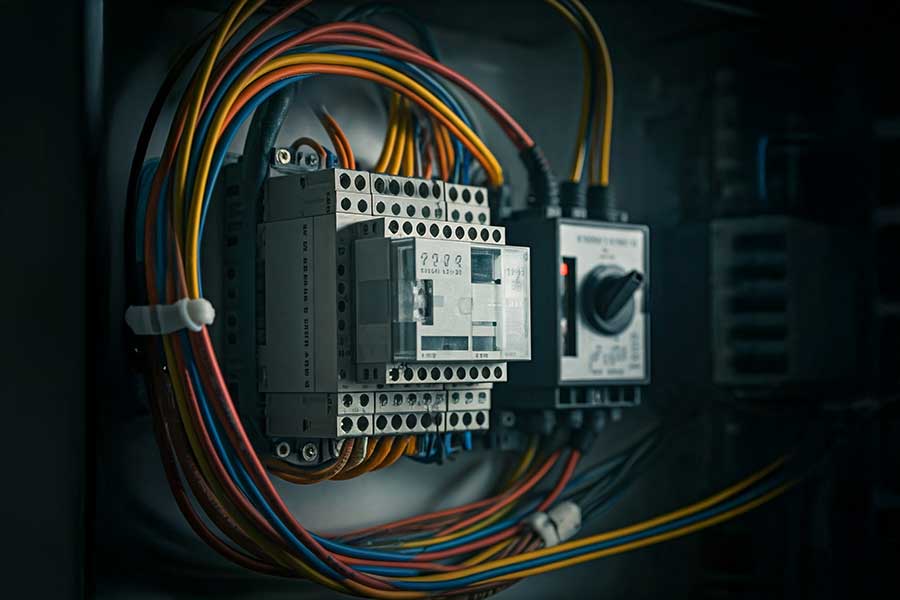
Automation systems are widely used in many fields, from modern industrial facilities to smart buildings. In order for these systems to work flawlessly, a reliable wiring infrastructure that transmits signals from sensors, actuators and control units is needed. Ülkü Kablo is one of the best options where you can reach this reliable cable infrastructure. In this article, signal and control cables come into play. In this text, we will take a closer look at what signal and control cables are, their types, characteristics, standards, and areas of use.
The Importance of Signal and Control Cables
Signal and control cables can be thought of as the "nervous system" of automation systems. They provide signal transmission at low voltage and current levels. Measurement data from sensors, commands sent from controllers to actuators, and other control signals are transmitted via these cables. Properly selected and properly laid signal and control cables are critical to the reliability, accuracy, and performance of the system.
Types of Signal and Control Cables
Signal and control cables are produced in different types according to their usage areas and requirements:
- Shielded Cables (Braided or Foil-Screened): These are cables that are covered with a metal shield (braided or foil) to protect against electromagnetic interference (EMI). They are used in the transmission of sensitive signals and in noisy environments. There are types such as LIYCY, LiYCY, CY, YSLY.
- Unshielded Cables: These are cables that do not contain shielding. They are used in less noisy environments and simpler applications. There are types such as LIYY, LiYY.
- Twisted Pairs: The conductors in the cable are twisted and wound in pairs. This twist helps to reduce electromagnetic interference. They are especially used in data transmission and communication systems.
- Coaxial Cables: It is a special type of cable that consists of two intertwined conductors. They are used in the transmission of high-frequency signals. They are often encountered in the transmission of antenna cables and video signals.
- Instrumentation Cables: These are special cables used in industrial measurement and control systems. They have features such as high sensitivity, low signal loss, and resistance to environmental influences.
Features of Signal and Control Cables
Here are some important features to consider when choosing signal and control cables:
- Conductor Material: Copper (annealed copper) is generally used. It is preferred due to its high conductivity and low resistance. Tinned copper is more resistant to corrosion.
- Number and Cross-Section of Veins: The correct number and cross-section of veins should be selected according to the application.
- Insulation Material: Different insulation materials such as PVC, PE, XLPE, PUR are used. The insulation material is selected based on factors such as the operating temperature of the cable, environmental conditions, and electrical requirements.
- Sheath Material: Different sheath materials such as PVC, PUR, HFFR (Halogen Free Flame Retardant) are used. The sheath material is selected according to factors such as the mechanical strength of the cable, its resistance to environmental influences and fire safety. HFFR sheathed cables emit less smoke and reduce the release of toxic gases in the event of a fire.
- Shielding: Provides protection against electromagnetic interference. Braided or foil shielding can be used.
- Twist Shape: Double twisted cables help reduce interference.
- Operating Voltage and Temperature: The maximum voltage and temperature values that the cable can withstand are important.
- Flexibility: The cable needs to be flexible enough for easy laying.
- Standards: Cables must comply with the relevant standards (VDE, IEC, UL, etc.).
Usage Areas of Signal and Control Cables
Signal and control cables are used in a wide variety of applications:
- Industrial Automation: Factory automation systems, robotic systems, conveyor systems, etc.
- Building Automation: Heating , cooling, ventilation, lighting and security systems, etc.
- Measurement and Control Systems: Process control, laboratory equipment, test instruments, etc.
- Telecommunications and Data Communications: Telephone systems, computer networks, etc.
- Security Systems: Alarm systems, camera systems, etc.
Things to Consider in Signal and Control Cable Selection
Choosing the right signal and control cable is critical to the performance and reliability of the system. Here are some factors to look out for:
- Signal Type and Frequency: The type (analog or digital) and frequency of the signal to be transmitted are important.
- Environmental Conditions: Factors such as temperature, humidity, chemicals, mechanical stresses and electromagnetic interference must be considered.
- Distance: Signal transmission distance is important. Appropriate cable should be selected to minimize signal loss over long distances.
- Standards and Regulations: Standards and regulations to be applied (e.g., fire safety) should be considered.
Result
Signal and control cables are an indispensable part of modern automation systems. Choosing the right cable is critical to the reliability, accuracy, and performance of the system. Selecting the appropriate cable, taking into account the requirements of the application and environmental conditions, is a fundamental step for a smooth automation system. You can contact Ülkü Kablo about your cable needs for automation systems.
